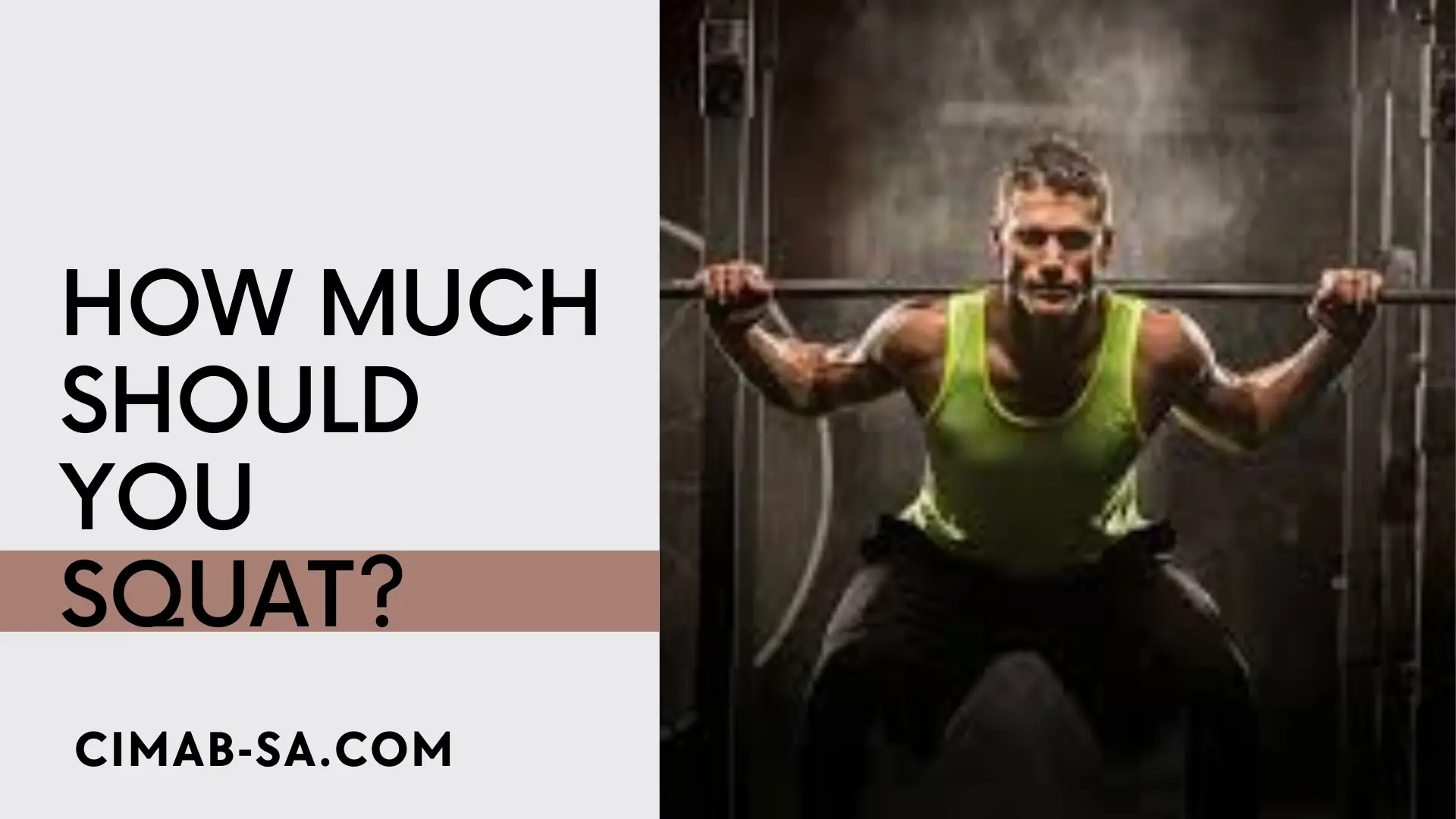The squat happens to be one of the most important compound exercises that can help you get great thighs but more than that it is important for many other reasons, giving your body a testosterone boost, being one of those. When it comes to the big three lifts, it ranks high along with two other exercises that include the bench press and deadlift. No doubt, it is one of the best exercises for the lower body and has a couple of variations. It not only helps build muscle mass but is equally effective for increasing strength.
Having said that, it is important to note that it also happens to be one of the most difficult exercises but those that love it simply vouch for it. Either you could love squats or hate squats, you cannot skip them.

It is a compound or multi-joint movement and it involves a couple of muscles and perfecting it comes with a steep learning curve. However, most novices are hell-bent on increasing the load on the squat barbell and often ask their peers – how much do you squat?
But this is not all!
Most bodybuilders or gymgoers try to outdo their gym buddies by stacking more weight to the squat barbell unmindful of what wrong movement or form could do to their knees, back and some of the other joints.
What you need to keep in mind is that recreational bodybuilding is an individual sport and that you should not be concerned about competing with others since doing so without proper knowledge of technique and form can be disastrous in the short term as well as the long run.
The average squat weight that bodybuilders should lift varies according to their gender, weight, and experience level as well as knowledge of technique.
Contents
Average Squat Weight
Without beating around the bush, let me list out the average squat weight according to gender, experience level, etc.
Average Squat Weight For Men
As far as men are concerned, the average squat weight depends upon body weight, age, experience level, etc.
| Body Weight (Pounds) | Beginner | Intermediate | Advanced | Exceptional | World Class |
| 114 | 95 | 180 | 265 | 305 | 375 |
| 123 | 100 | 195 | 285 | 330 | 410 |
| 132 | 105 | 210 | 305 | 350 | 440 |
| 148 | 115 | 230 | 340 | 390 | 485 |
| 165 | 125 | 250 | 370 | 420 | 530 |
| 181 | 130 | 265 | 390 | 450 | 560 |
| 198 | 140 | 280 | 410 | 470 | 590 |
| 220 | 145 | 295 | 430 | 495 | 620 |
| 242 | 150 | 305 | 445 | 510 | 640 |
| 275 | 155 | 315 | 460 | 530 | 665 |
| 320 | 160 | 325 | 475 | 545 | 680 |
Average Squat Weight For Women
Here’s how the squat weight for women is likely to differ depending upon their body weight and experience level:
| Body Weight (Pounds) | Beginner | Intermediate | Advanced | Exceptional | World Class |
| 97 | 60 | 125 | 185 | 215 | 270 |
| 105 | 65 | 135 | 195 | 225 | 285 |
| 114 | 70 | 140 | 210 | 240 | 300 |
| 123 | 75 | 150 | 225 | 255 | 320 |
| 132 | 80 | 160 | 235 | 270 | 340 |
| 148 | 85 | 175 | 255 | 295 | 370 |
| 165 | 90 | 190 | 280 | 320 | 400 |
| 181 | 95 | 200 | 295 | 335 | 420 |
| 198 | 100 | 210 | 305 | 350 | 440 |
| 200 | 100 | 210 | 305 | 350 | 440 |
How To Squat
Even though squatting might seem like a simple exercise, the correct form requires you to pay attention to detail. In order to get the most of this exercise, here are some simple steps that can help you squat like a pro:
- To begin with, set the barbell to just below the shoulder level and put on an appropriate weight on the bar. If you are doing it for the first time, start with light weight. Until and unless you get the form right, do not increase the number of plates on the barbell.
- Once you have the barbell set with proper weight, stand under the bar with your feet placed shoulder-width apart.
- While setting your position under the bar make sure that you have the bar resting on your traps and not on the back of your neck. This is a common mistake that a lot of beginners make.
- Next, grab the bar with a wide grip. This is important to ensure better stability.
- In order to take the weight off the rank, bend your knees slightly and straighten your back.
- You also need to keep your torso upright. At the same time push through your legs in order to take the weight off the rack.
- Once you have the weight on your shoulders, take a small step back and stabilize your position.
- Now, look straight and lower your body down as low as possible. Through the movement push your hips back and down. At the same time, you must make sure that you do not bend forward on the way down.
- How low you go is also extremely important. You must go down at least when your thighs are parallel to the floor.
- Now, get back to the starting position be getting up again. While getting up you would need to muster all your strength and push through the heels.
- As you go up, do not lock your knees, pause for a moment and contract your quads at the top.
- Now, you have completed one rep. Do as many reps as you want to.
Here’s a short video on how to do squats properly and avoid some of the common mistakes that people usually make while doing squats:
Steps To Improve Your Squats
Listed below are some of the best ways to improve your squats:
Start Doing Mobility Exercises
What you need to understand is that a stiff body or stiff muscles can actually negatively affect your performance whether it is squats or any other exercise. Since squats are a compound exercise that involves a lot of joints and muscles, you need to have better flexibility and mobility to get the best results from resistance training.
Thus, in order to improve your flexibility, it is good if you begin your workout with at least 10-15 minutes of stretching exercises involving your back, lower body, and shoulder cuffs.
Breathe Properly
Breathing properly can play an important role in resistance training. Usually, beginners have no clue as to how they should inhale and exhale while doing an exercise.
In the case of squats, there are two main ways how you can breathe.
- The first method is to take a deep breath and hold it till you go down completely while doing a squat. Then, you exhale as you go up.
- The second method is to inhale while going down and exhale sharply as you go back up.
Push Through The Heels
One of the most common mistakes that a lot of people make is that they try to get back up by pushing through the balls of their feet. As a matter of fact, you should be pushing through the heels while getting up.
Tip – Rather than trying to stand up, you may try to push the floor away from you. Even though this might sound silly, this is something that may help you improve your squats significantly.
Progressive Overload
Rather than increasing weight without getting the technique right, it is important to the get form right and then build up the weight load progressively. As you begin doing 10-12 reps with a set of weights with the correct form, it is time to increase your weight load, slowly but surely. This will certainly help improve your squats.
As you go on increasing the squat weight, it is important to use accessories such as a weightlifting belt, knee wraps and wrist wraps. They will not only provide support but will also help reduce the likelihood of getting injured.
Try Advanced Trainig Techniques
There are certain advanced techniques that you may incorporate into your squat routine not just to improve your squats but also to avoid hitting a plateau. Some of such techniques could include supersets, drop sets, negatives, forced reps, etc.
Allow Enough Time For Recovery
In order to allow your muscles to grow in strength and size, you must ensure that your body gets enough time to rest and recuperate after intense workouts. What you also need to understand is that legs are a bigger muscles group as compared to biceps or shoulders and thus, they need more time to recover. This is precisely why most professional bodybuilders do not train their legs more than two times a week.
Also Check Out: Average Bicep Size in Men and Women and Where You Stand
FAQs
What is a good squat for a male?
It all depends upon how you define good. According to CDC data, a skilled male lifter weighing 197.8 pounds can squat 355 pounds on average.
Is it hard to squat your bodyweight on the barbell back squat?
How much you can lift while doing squats depends upon your practice level. According to the data from Symmetric Strength, novice bodybuilders (male) up to the bodyweight of 220 pounds, can squat their bodyweight with adequate practice but they can do one-rep max. Having said that, intermediate male lifters can in the body weight category 242-320 pounds can do bodyweight squats easily.
As far as women are concerned, those weighing up to 105 pounds can squat their bodyweight on the barbell back squat. However, women weighing in the range of 114-200 lbs, will need more practice and will have to be intermediate lifters to be able to do bodyweight squats.


